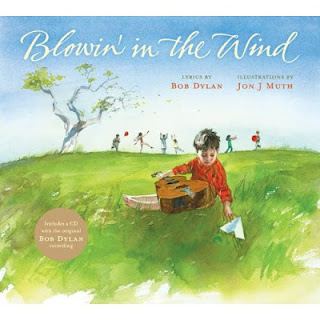 |
| Zucchini & Sweetcorn fritters. Lunch box ideas photo source: www.taste.com.au |
Lunch box ideas to make it easy & nutritious
Biome's eco and health-minded community recently shared a bunch of brilliant ideas to help make packing a waste free, nutritious kids lunch box easy peasy! They entered our survey competition to win a $200 voucher from Eeni Meeni Miini Moh.We were overwhelmed by the organised and inspired minds out there! The primary idea is to make it just as easy and fast to use home-made foods in reusable containers, rather than feeling you only have the time to grab pre-packaged, individual serve foods. There's no doubt that this bulk buying approach will save money; plus, home made avoids the additives and preservatives in processed foods. Further, more schools are requiring parents to not send any disposable plastic wrap or pre-packaged food in lunch boxes.
To ease the strain on morning brains, many survey respondents recommend writing a menu plan for the week, rotating set menus or following the same formula every day.
Following a routine or formula for the lunch box contents each day also helps with making children responsible for packing their lunches from an early age (another popular theme). A simple break down such as this works well:
1. Sandwich or pasta
2. Fruit or vegetable sticks
3. Yoghurt or sweet home bake from the freezer
4. Savoury dry snack or home bake.
5. Something extra if they want: egg, cheese, dip
The most popular lunch box idea is to home bake and freeze or prepare ahead ready for easy picking in the morning. Kids love a variety of snack size goodies and you can pack a lot of nutrition into small things that make lunch more interesting and fun. See the ideas below on what you can bake ahead and freeze. And, of course, get the kids to help with the baking so they have ownership of what they're eating.
We were also motivated by the number of organised people who recommend packing most of the lunch boxes the night before to save stress when the morning rush is on.
Lunch box ideas - Mini foods to bake ahead and freeze
 |
| Mini eggless banana choc chip muffins (link below) |
More ways to be organised in advance
- On the weekend, pre-pack dried fruit, organic corn chips, dry biscuits into little reusable containers ready for five days of snacks.
- Cook up bulk amount of pop corn at the beginning of the week (popcorn maker recommended for ease and low fat content).
- Make a dip early in the week and then simply cut up vegetable sticks on the day.
- Cut up vegetable sticks and cheese (use mini biscuit cutters for fun shapes) for a couple of days supply - or, while making dinner the night before, cut or grate extra for lunches the next day.
- Make extra quantity of noodles/pasta/sausages at dinner and use for lunches. Can be sent to school hot in an insulated food thermos.
- Make a salmon or tofu spread at the beginning of the week to put on sandwiches each day.
- Fill a week's worth of refillable Squeeze pouches with yoghurt or milk and fruit smoothies
Some favourite lunch boxes
Goodbyn - is much loved because it has only one lid to keep track of! The Goodbyn Bynto is a one meal or small meal size.
Sandwich wrap - saves wasting plastic wrap, the wraps are a good style as once kids open the wrap it acts like a plate
More healthy lunch box ideas
- Steamed chicken makes yummy fresh wraps with salad and sweet chilli sauce for older kids.
- Bulk tubs of Greek yoghurt and spoon into reusable containers with honey, tinned, fresh or frozen fruit.
- Vegies: Cherry tomatoes, cucumber sticks, carrot sticks, celery sticks, capsicum
- Smoothie or protein shake
- Frozen grapes and berries
- Boiled eggs
- Home made chocolate milk slushies (freeze ahead and by lunch time it's a slushie)
- Frozen yoghurt in small containers.
Here's two of our favourite posts by others with lunch box ideas
Natural New Age Mum ~ Healthy Lunchbox ideas and none of them are sandwiches
The Organised Housewife ~ Freezable Lunchbox Baking recipes
And see more ideas in our earlier lunch box ideas post.
Menu planning
In the words of one our respondents: A few minutes over the weekend plotting out lunches for the coming week means you buy/make what you need so you have it there on hand and it saves SOOOO much angst. You just read what you've arranged for that day, pop it all together and away you go. Highly recommended :)
Here are some of the lunch box ideas that impressed us most (we received so many that we'll post more in the coming weeks)
Make up five days worth of sandwich/wrap items and cook and cut up a healthy slice/tray of muffins that are freezable with the kids on Sundays. Use 4 my earth wraps to store items 'ready to go' in the freezer and grab them out the night before (or in the morning on a really hot day), add a piece of fruit/vege or two, a bottle of water and off to school!!
Don't try to be too fancy or have too many options. My kids happily take and eat basically the same things every day. Sandwich fillings change depending upon whether we have roast or if chicken fillets are on special. I cook chicken fillets then slice them up and freeze in portions. A homemade banana, cranberry & choc chip muffin (from the freezer and zapped for 20 seconds then into small container and insulated lunch bag). Some fruit, chopped for easy consumption and either some carrot sticks, grapes, cucumber sticks or yoghurt - rice crackers or chicken crimpys occasionally.
Use containers with lids attached so you are not looking for lids. Line up containers and cut each persons fruit and then cut each persons lunch,fill each water bottle and place in lined up bags. Don't spend time in the morning looking for containers. Label all items.
I make 5 sandwiches at the beginning of the week & freeze in a Keepleaf wrap. Take it out of the freezer the night before & the next morning pop fresh veg such as avocado, lettuce or tomato on it!
I dont buy plastic wrap so if its not there, it cant be used.
My kids get "bits & bobs" in their boxes everyday = they want variety! The compartments in the Goodbyn make it easy - all fruits cut up in one (stone fruit, pears, berries, etc), all veg in another (peapods, cuc, capsicum, cuc, carrots, celery), salami/bbq chick/salmon/protein in another, naan bread/crackers/grain/muffin in another and a sweet. Goal in our house is a lot of variety everyday and it is all healthy - and gobbled up!
I place all the containers in a zipped up fabric carry bag with a frozen drink bottle wrapped in a tea towel to keep everything nice and cool (old fashioned & a bit daggy but works a treat!)
[Note: this person has five children and has a precision scheme going on :-) !] On shopping day I freeze cheese or vegemite sandwiches into loaf shape containers (I use one container for cheese and one for vegemite). The slices that don't fit in make sandwiches for that days' lunch which I make at the same time :) This also helps to keep the lunchboxes cool and the sandwiches nice and fresh) They are easy to add salad, chutney, cold meat to when packing or to just grab and go on busy days. With 5 kids I find that making a few loaves of sandwiches doesn't take that much more time than making them 1 each. If i'm organised I make the lunches after dinner using leftovers if possible or just grab a frozen sandwich on a shelf in the fridge dedicated to lunches/leftovers. I also try to cut up any vegies such as carrot or cucumber sticks as I'm cooking dinner eg if I'm making a salad I'll cut up the cucumbers for lunch at the same time and pop straight into the lunchboxes.:)
You can find another great list of lunch box ideas in our earlier post and Biome's large choice of lunch boxes and sandwich wraps here. Lunch boxes also available at Todae Lifestyle Store.
 |
| Lunch box ideas photo courtesy of Squeeze ems reusable pouches |
A final word on replacement parts
We offer Thermos plastic straw and Thermos silicone mouth pieces for the Thermos insulated Funtainers. You can find the Thermos Spare Parts here.
Kids Konserve replacement lids






































